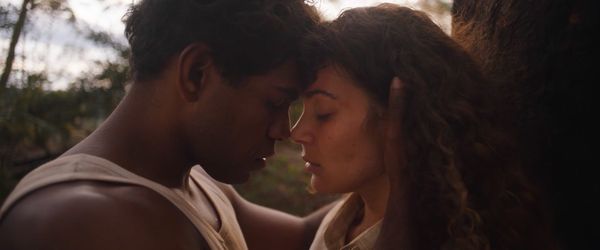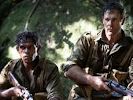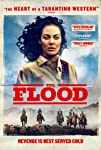Eye For Film >> Movies >> The Flood (2020) Film Review
The Flood
Reviewed by: Jennie Kermode

There’s a moment at the very end of Victoria Wharfe McIntyre’s The Flood when we see some of her characters wearing sunglasses. It’s powerful because it snaps us back to the here and now and makes us realise that the events it depicts happened within living memory. Much of the rest of what we see could be happening at any time in the last couple of centuries. There’s a temptation to distance it in one’s mind. In part this is a way of escaping the horror of it. In part, it’s a way of evading responsibility, or of pretending to ourselves that we have undergone some unlikely fundamental change.
The events we see are set in one of those quiet rural backwaters where time always seems to move more slowly than it does elsewhere. Its a place whose routine is about to be brutally interrupted, however, as conscription sees men leave to fight in the Second World War. Individual losses aside, this disrupts the social order in two major ways. In the war, white men fight side by side with indigenous men. They will no longer be able to think of them as less than human. Back home, however, white men seize the opportunity to take the land previously set aside as a reservation for indigenous people, splitting up families and plunging the women, children and old people into slavery.

One of these women is Jarah (Alexis Lane). Having been raised by an indigenous mother and an Irish immigrant father, she has skills and expectations which exceed the opportunities offered by her legally subhuman status. Nonetheless, she has lived a quiet life with her husband Waru (Shaka Cook) and daughter Binda (Simone Landers) until this development occurs. When Waru returns from the war, shocked by what he finds, his first priority is to rescue Binda. Jarah is taken prisoner in the hope that this will make it easier to capture him, but the white community isn’t as united as some of its members assume, and she’s a formidable individual in her own right.
What follows employs many of the tropes of a western but ultimately goes in its own direction, inspired by First Nations attempts to find means of reconciling with the past and with their white neighbours. This, together with its unconventional structure, has clearly been regarded as a misfire by some audiences. It doesn’t follow the familiar rules of the revenge movie and doesn’t provide the same type of satisfaction. McIntyre is more interested in finding real solutions. You’ll get more out of it if you’re aware of that from the outset.
Instead of a driving narrative focused on a single character, McIntyre explores the effect of these events on the fabric of a community in which, despite the best efforts of those with power, the lives of white people and indigenous people inevitably intersect. Gender is also a potent factor, creating sympathies – as all the women have to contend with the worst behaviour of the powerful men – which run deep. Any number of scholars have, of course, observed the limitations of this type of white feminist narrative, but it works well enough in the context of a small group of individuals (especially in light of the fact that we see some white female characters exhibiting no sympathy at all). The Church, though its role is never centred, is approach critically, shown to have collaborated in the real life abuses on which events in the film are based.
Along with this broader approach to narrative, The Flood departs from the usual tightly focused linearity of storytelling in such contexts, looping around to show us events happening at the same time and including scenes from its characters’ dreams and interior worlds, creating a story with an underlying richness which, nevertheless, some will find difficult to follow. Some prior emotional investment in the bigger issues being addressed makes it easier to bear with the film as it does this and to retain an emotional focus on events. Individual scenes hit hard emotionally, especially those dealing directly with violence and the casual attitude of certain which characters to indigenous people’s lives. There are scenes depicting sexual violence, which was so endemic that it would be problematic to exclude it, but McIntyre takes care to avoid sensationalising this. Instead, her focus is very much on the misery and fatigue that frequent abuses of this kind create.
Going beyond this, McIntyre positions the culture of the white characters as something internally damaging, something which harms them even as it harms others, and something which it might be possible to recover from. On this level the film is much more focused on systems than individuals, but the visibility of the damage done by those systems means there’s no risk of individual responsibility being downplayed.
At a point when Australian cinema is finally opening up to indigenous narratives, The Flood is a bold attempt to build bridges and seek positive ways forward. It’s an uneven film, hit and miss in its experimental approach, but an important reflection on the horrors of the recent past, and a reminder of how relevant they remain today.
Reviewed on: 01 Nov 2021

















